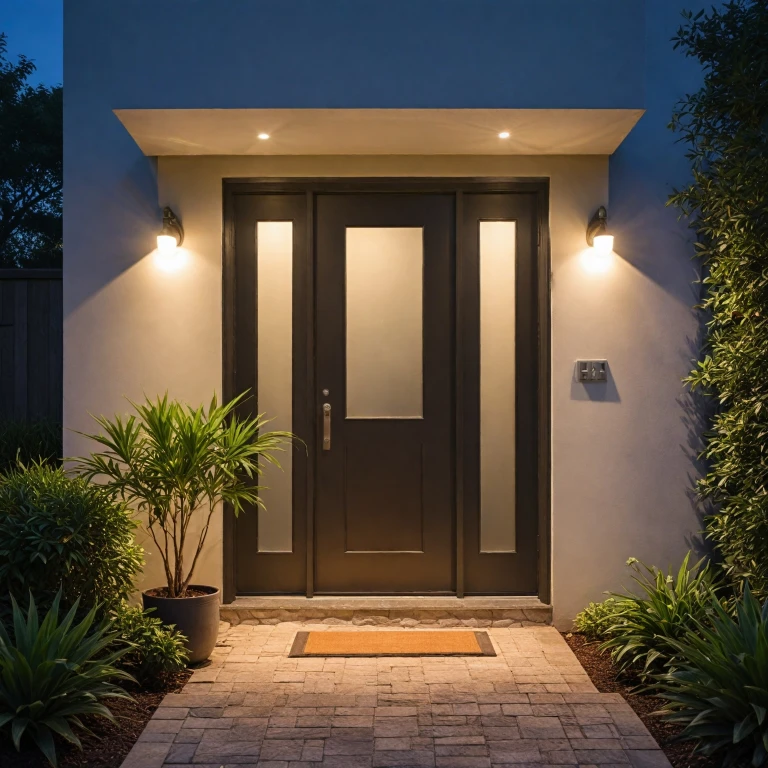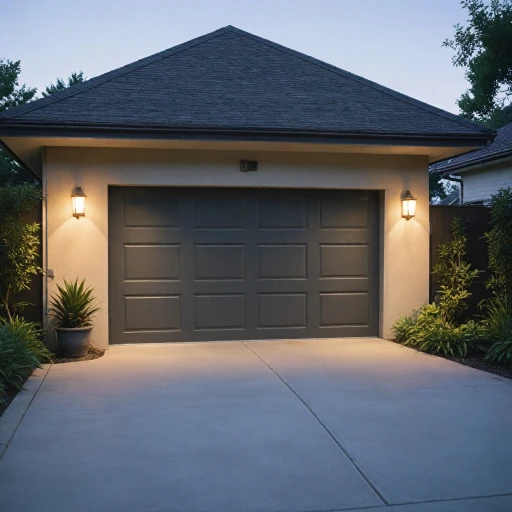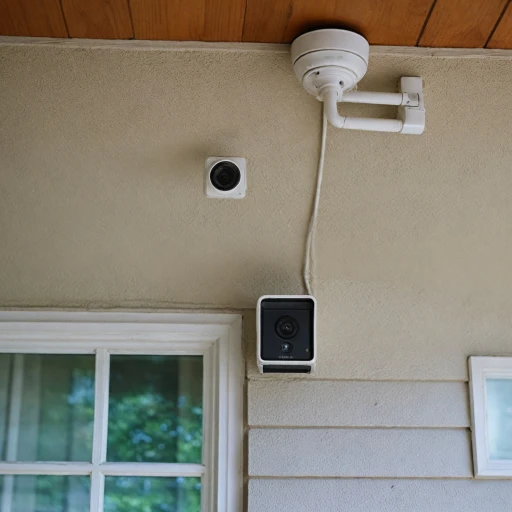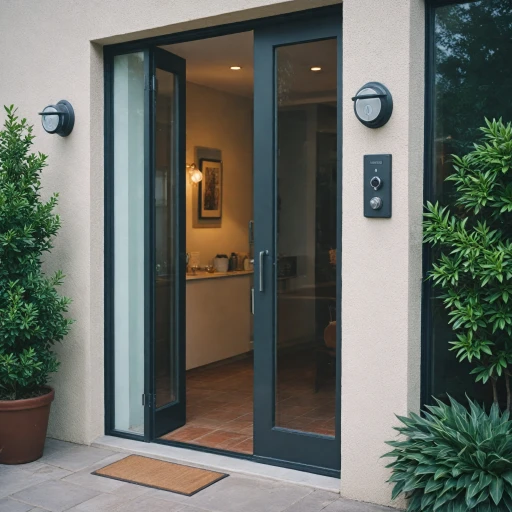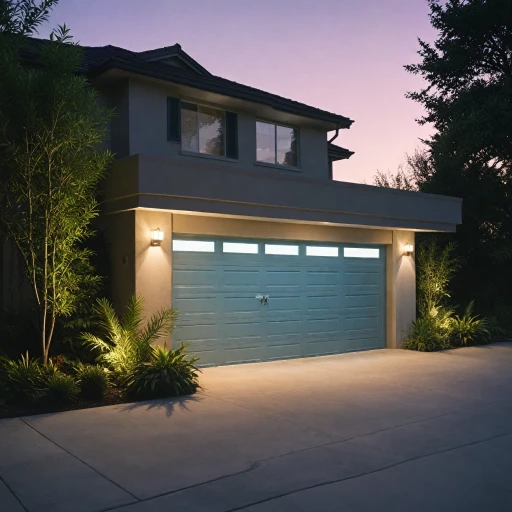
Understanding Magnetic Door Sensors
Diving into the Functionality of Magnetic Door Sensors
Understanding how magnetic door sensors operate is essential for enhancing your home security. These sensors are a crucial part of a larger security system, providing an effective way to monitor access points in your home, such as doors and windows, by detecting their open or closed status. Magnetic door sensors consist mainly of two components: a magnet and a reed switch. The magnet is mounted on the door or window, while the reed switch, a vital part of the contact sensor, is installed on the frame. When the door or window is closed, the magnet and reed switch are in close proximity, maintaining an electrical circuit. As the door or window opens, the circuit breaks, triggering an alarm or an alert within your security system. These sensors come in various types to suit different installation preferences and aesthetic requirements. Surface mount sensors are visible on the frame, while recessed options are discreetly installed within the door or window. This versatility makes them suitable for a range of door and window types. Products vary by unit price and features, with some offering wireless capabilities for easy installation. These systems often include a pack of sensors, allowing you to cover multiple access points in your home. Understanding the regular price and sale price options available can aid in choosing a product that fits your budget, while ensuring you maintain a robust security setup. For further insights into how magnetic door sensors integrate with broader security technologies, explore the advancements in sensor technology. Embracing the right technology can significantly fortify your home against unauthorized access.Benefits of Integrating Magnetic Door Sensors with Security Cameras
Why Combine Magnetic Contacts with Security Cameras?
Integrating magnetic door sensors with security cameras can significantly enhance your home security systems. These sensors, also known as magnetic contacts or door sensors, work in conjunction with security cameras to provide a comprehensive monitoring solution. Here's why this combination is so effective:- Immediate Detection and Response: When a door or window is opened, the magnetic switch activates an alarm system that immediately triggers the connected security camera. This real-time response ensures that any unauthorized access is instantly captured, giving you quick visual confirmation of the situation.
- Enhanced Security Layers: By using magnetic reed switches in tandem with cameras, you create multiple layers of security. While the magnetic door sensors handle entry detection, cameras provide constant surveillance, deterring potential intruders and recording evidence.
- Integration with Existing Systems: Many magnetic contact sensors can be seamlessly integrated with existing security systems, including wireless alarms and access control units. This means you can enhance your home security without overhauling your entire setup.
- Cost-Effective Solution: Implementing door contacts alongside security cameras can be a cost-effective way to bolster security. The sensor price is often more affordable than other high-tech solutions, while providing an essential alert and monitoring function.
- Flexibility and Compatibility: With options ranging from surface mount to recessed sensor alarms, magnetic door and window sensors can be tailored to fit various home designs and security needs. This flexibility, combined with the regular price point, makes them an attractive choice for many homeowners.
Installation Tips for Magnetic Door Sensors
Ensuring Proper Mounting and Configuration for Magnetic Door Sensors
Incorporating magnetic door sensors into your home security system is a practical and effective measure. The proper installation of these sensor alarms is crucial for their functionality and reliability. Here’s a brief guide to help you with the process:
- Select Appropriate Locations: Identify the doors and windows where you plan to install the sensors. Assess if a surface mount setup or a recessed installation suits better, considering the design of your doors and windows.
- Check Product Compatibility: Compatibility is key. Ensure that the magnetic contacts and door contact systems you choose are compatible with the existing access control and alarms in place. It’s important to verify if a wireless or a wired setup best fits your system.
- Installing the Magnetic Contacts: Align the magnetic contacts correctly. The magnets and reed switches in the sensors should be positioned correctly to ensure proper activation. Typically, when the door window is closed, the magnetic contact should be tight enough to trigger the sensor.
- Conduct a Test: Testing is an essential part of the installation. Once installed, check the functionality by repeatedly opening and closing the door or window. This ensures that the reed switch engages properly and the alarm system receives notifications accordingly.
- Evaluate Cost-Efficiency: Consider factors like the regular price versus sale price of sensor packs when deciding on bulk purchases. Balancing between budget and quality could save you significant sums over time.
Furthermore, if any troubleshooting is required during installation, it is beneficial to understand how to address common issues in home security camera systems. This knowledge can help resolve any installation hiccups effectively.
Choosing the Right Magnetic Door Sensor for Your Home
Selecting the Optimal Magnetic Door Sensors for Your Living Space
Finding the right magnetic door sensor for your home security system involves understanding the intricate details of various options and how they align with your security needs. Consider these crucial aspects:- Type of Sensor Mount: Decide between surface mount and recessed mounts. Surface mount sensors are visible on the door or window frame, making them easy to install. Recessed sensors, on the other hand, are hidden within the frame, providing a more discreet appearance.
- Wired vs. Wireless Systems: Wireless options often feature easier installation and greater flexibility in sensor placement. However, wired systems might offer enhanced reliability as they are less prone to interference.
- Contact Sensor Variants: Standard magnetic contacts or reed switches can vary in their specifications. Ensure the contact sensor you choose is compatible with your current security alarm systems for seamless integration.
- Environmental Suitability: Consider the environment where the sensors will be placed. Exterior doors and windows may require weather-resistant options. This ensures durability and functionality regardless of environmental conditions.
- Price and Packages: Evaluate the price in correlation with the benefits you obtain. Some products come in a pack, offering more units at a regular price, which could be more economical. Look for sales to avail them at a sale price.
- Additional Features: Some advanced models may offer features such as tamper detection and remote access control. Assess these as per your security demands.
Troubleshooting Common Issues with Magnetic Door Sensors
Common Problems and Solutions
Implementing magnetic door sensors into your security system can dramatically enhance your home security, but like any technology, they are not without issues. Here are some common problems users might face, along with practical solutions:
- Sensor Misalignment: Magnetic contacts must be properly aligned for optimal functionality. Ensure that the magnet and the sensor are close enough to maintain proper connection, usually a fraction of an inch apart.
- Weak Signal in Wireless Models: If you're using a wireless door sensor, the signal might be weak due to distance from the main security system. Try relocating the receiver closer to the sensor or using a range extender to maintain a strong connection.
- Battery Issues: Many sensors are battery-operated. Regular checks and timely replacement of batteries are crucial to avoid unexpected power failures. Opt for durable batteries to minimize replacement frequency.
- False Alarms: False alarms can occur due to environmental factors or misalignment. Regularly clean the sensors and ensure proper alignment and positioning to reduce these occurrences.
- Compatibility with Security Systems: Check compatibility when integrating magnetic door sensors with other security systems. This prevents connectivity issues or malfunctions in your overall security setup.
By keeping these troubleshooting tips in mind, you can ensure your magnetic door sensors effectively guard your home, working seamlessly with your security cameras and alarm systems.
Future Trends in Home Security Technology
Emerging Innovations in Magnetic Door Sensor Technology
As technology continues to advance, the world of home security systems is no exception. New trends in magnetic door sensors are rapidly emerging, aiming to enhance security measures and offer more convenience to homeowners. Here's a closer look at some of the key trends shaping the future of magnetic door sensors:
- Wireless Integration: The use of wireless technology is becoming increasingly popular in the field of sensor development. Wireless magnetic door sensors eliminate the need for complex wiring, allowing for easier installation and reducing clutter.
- Smart Home Compatibility: With the rise of smart home technology, more door sensors are being designed to work seamlessly with smart hubs and other connected devices. This integration allows homeowners to control and monitor their door and window access remotely.
- Enhanced Energy Efficiency: Manufacturers are focusing on creating energy-efficient models that extend battery life without compromising performance. This is especially beneficial for those looking to maintain a sustainable approach to home security.
- Improved Sensitivity and Detection: Advances in sensor technology are leading to more sensitive and accurate detection capabilities. This means that magnetic reed switches and magnetic contacts can provide better security by quickly identifying unauthorized access.
- Cost-Effectiveness: Price variation remains a critical factor for consumers. As technology becomes more accessible, the regular price of magnetic door sensors is decreasing, making advanced security systems more affordable for a broader audience.
- Durability and Design: Modern products are being designed to be more resilient and aesthetically pleasing. Options like recessed and surface mount sensors offer different installation choices without compromising on the overall external appearance.
As these trends continue to develop, integrating magnetic door sensors with comprehensive security cameras and other alarm systems provides a robust defense mechanism against potential intruders, keeping your home safe and secure.

